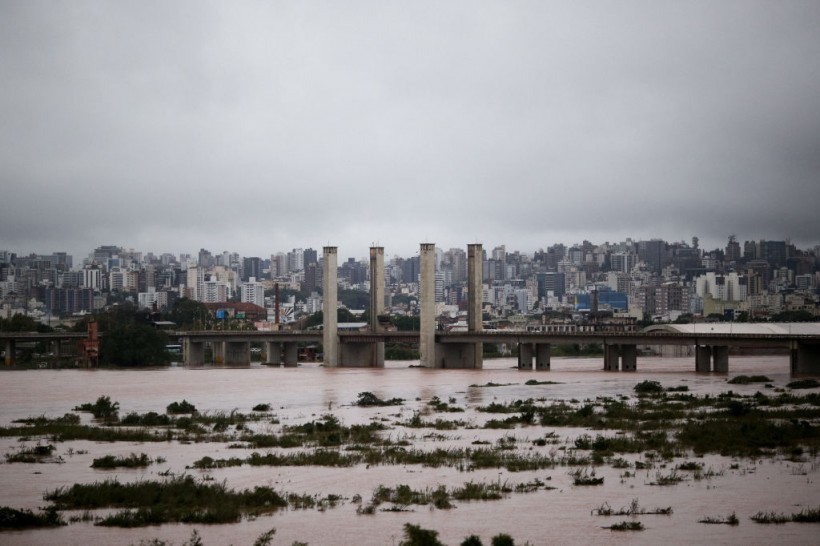Brazil: Deadly Floods Claim At Least 39 Lives

In the southern Brazilian state of Rio Grande do Sul, heavy rains have led to catastrophic flooding, claiming the lives of 39 individuals, with 68 others reported missing, as confirmed by the state civil defense agency on Friday.
This grim toll marks the fourth environmental disaster within a year, following devastating Brazil floods in July, September, and November 2023, which collectively resulted in the loss of 75 lives.
The scale of flooding surpasses historical records, with water levels in some areas reaching their highest points in nearly 150 years, according to the Brazilian Geological Service, AP News reports.
The situation escalated on Thursday when a dam at a hydroelectric plant between the cities of Bento Goncalves and Coti Pora partially collapsed.
This event triggered a deluge that engulfed entire cities in the Taquari River valley, such as Lajeado and Estrela.
Additionally, the town of Feliz witnessed a swollen river sweeping away a vital bridge connecting it to Linha Nova, its neighboring city.
READ NEXT: Lula Tours Flood-Hit Brazilian State as Death Toll Hits 29
Humanitarian Crisis Unfolds
With infrastructure severely compromised, operators reported widespread disruptions in electricity, communications, and water supply across the state.
Over 24,000 residents were forced to evacuate their homes, leaving them stranded without essential services.
The absence of internet, telephone connectivity, and electricity compounded the challenges, leaving residents unable to communicate with relatives in other regions.
Helicopters scoured the inundated cities for stranded families, many of whom sought refuge on rooftops awaiting rescue, according to The Independent.
State of Emergency Deepens
Governor Eduardo Leite issued warnings to the state's population, known as gauchos, emphasizing the worsening weather conditions, Reuters noted.
The downpour, which commenced on Monday, is anticipated to persist until at least Saturday, according to Marcelo Seluchi, chief meteorologist at the National Center for Monitoring and Alerts of Natural Disasters.
The extreme weather patterns gripping South America are attributed to the El Niño climate phenomenon, which historically triggers intense rainfall in the southern region of Brazil.
This year, the effects of El Niño have been exacerbated, with the Amazon experiencing a historic drought, highlighting the escalating impact of climate change.
President Luiz Inacio Lula da Silva visited affected areas to assess the situation and pledge federal support for rescue and reconstruction efforts.
However, challenges persist as another 60 individuals remain missing, and approximately 15,000 residents have evacuated their homes since Saturday.
Essential services have been disrupted, leaving around 500,000 people without power and access to clean water.
The rupture of the dam triggered a two-meter wave, exacerbating the ongoing flooding and causing panic among residents.
Helicopters are in use for search and rescue missions, yet in some areas, the severity of Brazil's floods has rendered traditional rescue methods ineffective.
Meteorologists forecast further rainfall as a cold front moves across the region, compounding the existing challenges.
Officials stress the urgency for immediate action, linking the heightened rainfall frequency and intensity to the El Niño climate pattern, as per BBC.
The convergence of hotter-than-average temperatures, high humidity, and strong winds has created a perfect storm, resulting in widespread devastation.
In the face of this crisis, the Brazil government, alongside state and local authorities,
efforts must focus on coordinating actions to guarantee the safety and welfare of impacted communities.
As the region grapples with the aftermath of this disaster, the imperative for proactive measures to mitigate the impact of climate change becomes increasingly urgent.
READ MORE: Bogota Implements New Water Measures Amid Drought
This article is owned by Latin Post.
Written by: Ross Key
WATCH: Brazil floods: Dam collapses and death toll rises in Rio Grande do Sul - From BBC News
Subscribe to Latin Post!
Sign up for our free newsletter for the Latest coverage!














